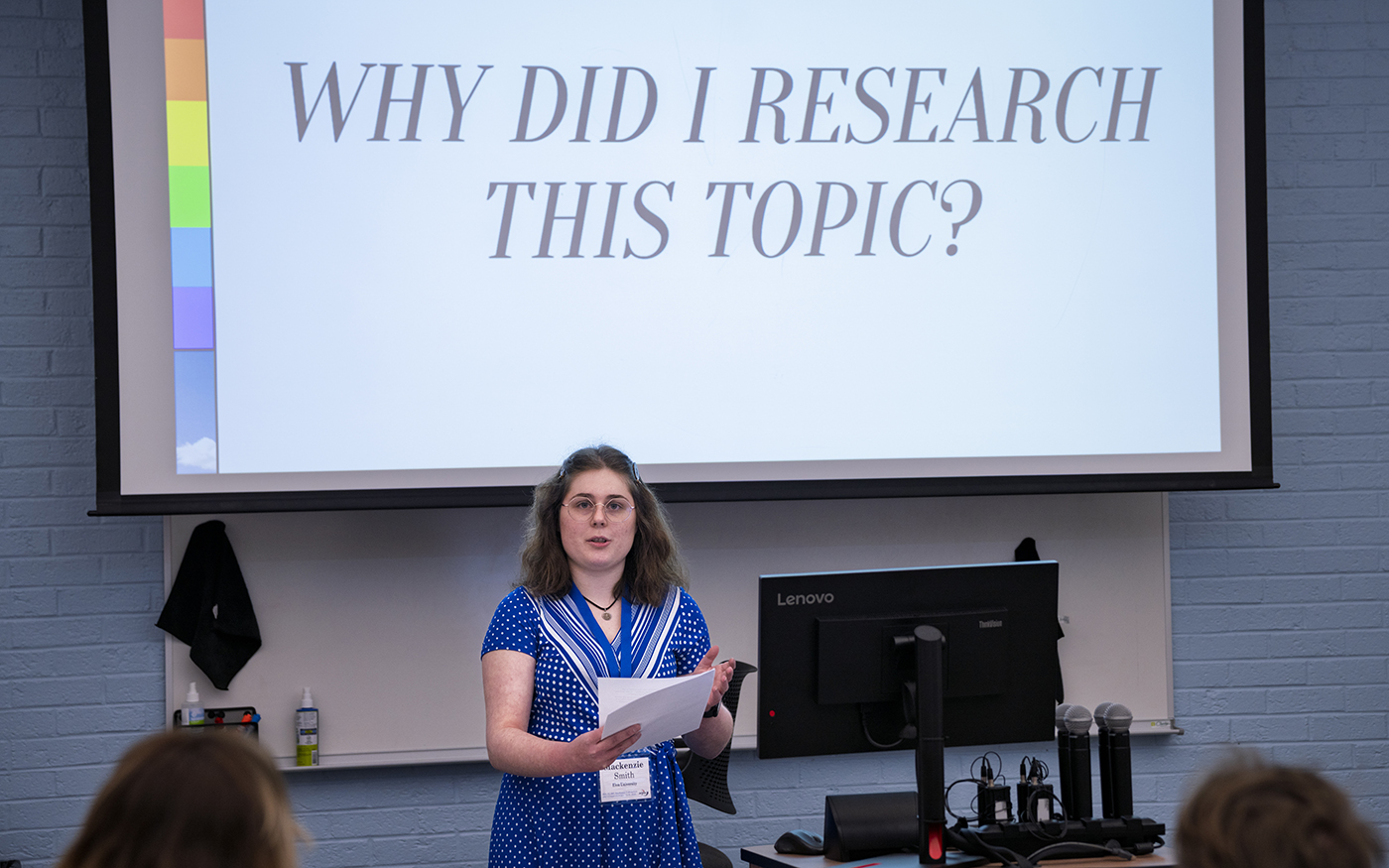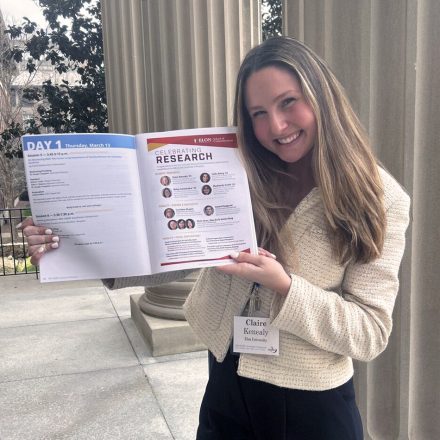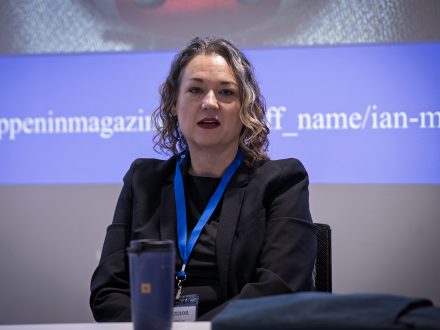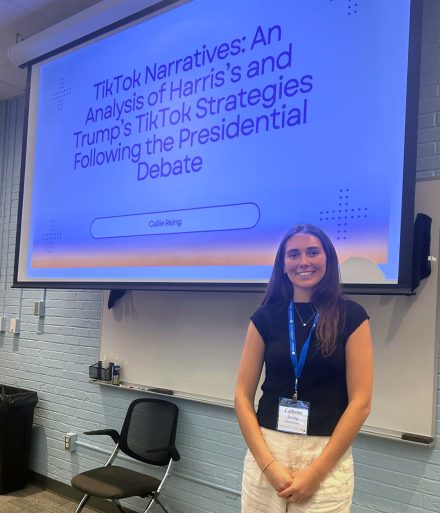Supported by faculty mentors, the student participation showcased Elon’s strong academic presence and commitment to undergraduate research in journalism and communications.

Four undergraduate students from the School of Communications presented original research at the 50th Association for Education in Journalism and Mass Communication (AEJMC) Southeast Colloquium, hosted in mid-March at the University of North Carolina at Chapel Hill.

The conference welcomed communications scholars from across the Southeast, with Elon earning recognition for its strong undergraduate presence. All four student presenters – Claire Kenealy ’25, Callie Reing ’25, Betsy Schlehuber ’25, and Mackenzie Smith ’25 – had their research accepted through a competitive peer-review process, a distinction typically reserved for graduate students and early-career faculty. A full listing of Elon’s student and faculty participation is provided below.
“Several faculty from other institutions noted the high quality of our students’ research and praised the professionalism of their presentations,” said Professor of Communication Design Harlen Makemson, who mentored Kenealy. “Our students were not at all intimidated – in fact they showed they belonged.”
Reing, Schlehuber and Smith were mentored by Dan Haygood, associate professor of strategic communications.

Shannon Zenner, assistant professor of communication design and chair of AEJMC’s Visual Communication Division, highlighted the significance of Elon’s strong student participation.
“What’s especially impressive is that the reviewers didn’t know our students were undergraduates,” she said. “The competition only distinguishes between student and faculty presenters, so our students were evaluated alongside graduate students and held their own. That speaks volumes about the quality of their work and the level of preparation they received.”
Following the colloquium, several student presenters shared their reflections on social media.
“Throughout the conference, I had the pleasure of listening to numerous thought-provoking research presentations and panels, which deepened my understanding of the evolving communications world,” wrote Reing, who presented research titled, ‘TikTok Narratives: An Analysis of Harris’s and Trump’s TikTok Strategies Following the Presidential Debate.”

Reing, a strategic communications major, also praised the keynote address by Matt Winkler, co-founder of Bloomberg News, which focused on artificial intelligence.
Elon faculty also contributed significantly to the colloquium, presenting refereed papers, abstracts, and participating in panel discussions on topics ranging from AI and visual communication to service-learning and media history.
“We have a strong reputation in the field of academic journalism and communication, not just for our scholarship but also for our commitment to teaching and learning,” Zenner said. “Both our students and faculty are active at every level of these conferences, from leadership to presentations. Participating in events like this allows us to share our work, connect with others doing similar research, and stay engaged with emerging conversations in the field.”
Zenner noted that such connections often lead to new collaborations across institutions.
Colloquium Participation
Student Research
Claire Kenealy ’25 – ‘Climate Change Communication: How Young Social Media Users Respond to Positive and Negative Messaging’ (Refereed research paper)
Callie Reing ’25 – ‘TikTok Narratives: An Analysis of Harris’s and Trump’s TikTok Strategies Following the Presidential Debate’ (Refereed research paper)
Betsy Schlehuber ’25 – ‘A Special Interest in Spontaneity? Newsroom Experiences of Journalists with Autism Spectrum Disorder and How Employers Can Accommodate’ (Refereed research paper)
Mackenzie Smith ’25 – ‘Model Queerness: Intersectionality Within the Representation of Mainstream Queer Film Post-Obergefell v. Hodges’ (Refereed research paper)
Faculty – Papers & Abstracts
Lorraine Ahearn – ‘‘Fake Indians’: Resisting Delegitimization in the Contested Space of Historical Journalism’ (Abstract)
Daniel Haygood – ‘Brought to You By: An Exploration and Analysis of the Original Advertising Sponsors of Televised Atlantic Coast Conference Basketball’ (Paper)
Chris Chen, Qian Xu & Jenny Jiang – ‘Understanding College Students’ AI Adoption Intention: A Perspective of Interactive Communication Technology Adoption Model’ (Refereed research paper)
Faculty – Panel Discussions
Visual Communication for the Public Good: Service-Learning Best Practices in the Classroom
– Phillip Motley (Moderator)
– Hal Vincent (Panelist)
– Ben Hannam (Panelist)
From A(I) to V(R): The Impact of Generated Visual Communication on Content Creation and Research
– Shannon Zenner (Panelist)
Artificial Imagery, Real Consequences: How AI Disclosure Shapes Perceptions
– Shannon Zenner (Panelist)
The AEJMC Southeast Colloquium at 50: The Evolution and Future of the AEJMC Regional Meetings
– Kenn Gaither (Panelist)


